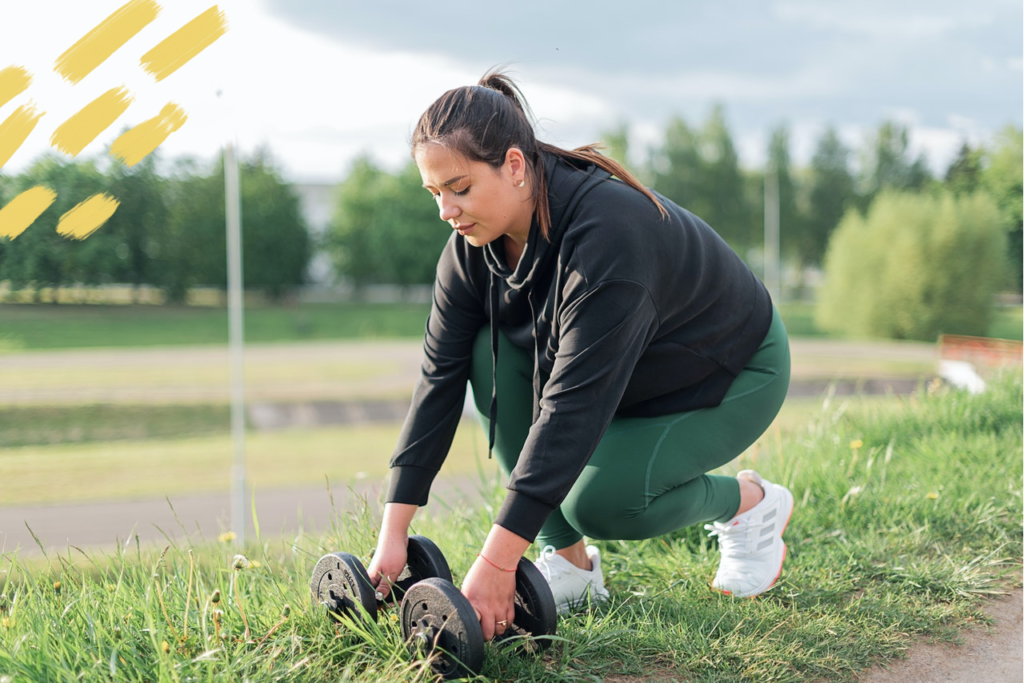During the height of the pandemic, with hastily sep-up domestic gyms seeing some serious action and the expertise of personal trainers only available digitally, at-home exercise injuries skyrocketed.
As reported in the Telegraph, around “7.2 million eager exercisers have potentially been hurt or injured during lockdown”.
They go on to report that men are twice as likely to injure themselves than women, but really, this is a risk that hangs over every home workout, regardless of gender.
Yep, from sprains and strains to pulled muscles and back injuries, for medical companies and the NHS alike, there has been an onslaught of visits from people using home gym equipment or online PT sessions.
Forget the nation’s PE teacher… Where’s the nation’s physiotherapist when you need them? While some are now returning to their old routines at the gym , many have vowed never to return to the gym again. As such, we’re sure there will be many more dodgy routines to perform on the living room rug and many more at-home injuries to negotiate as a result.
There’s nothing worse than throwing your all into training only for injury to curtail your progress, but if you’re looking to make a return to the gym following an injury, there are a few things you can do to ensure your next workout is as safe and secure as possible. Here’s our guide on doing just that.
Consult Your GP Or Physiotherapist
The first and most important step is to consult your GP or the medical professional you were referred to who helped your rehabilitation from injury. This will likely be a physiotherapist.
They will have detailed knowledge of the nature of both your injury and recovery, and will be able to help you establish a plan that is both safe and effective for your return to training. Often, this might involve a graded return to activity, which will consider your injury, age and overall fitness levels.
Though you may feel like you’re ready to return, you’ll only know when it’s the right time to do so after speaking to your doctor, who will be able to assess your injury and let you know the exact point of your healing progress. As much as it is a cliche, always follow your doctor’s orders, first and foremost.
Read: 5 steps to take after sustaining an injury at work
Ease Back Into Things
Once you’ve got the go-ahead, don’t try and do too much too quickly, however tempting it might be. This is a common mistake that many people make – believing that they can return to their old personal bests – but it can often do more harm than good. Remember, you want to be able to sustain your training and not aggravate the injury further, and this is only possible by taking a measured approach.
Start by slowly reintroducing some basic exercises into your routine. This can be as simple as walking or cycling at first, allowing you to gradually increase the intensity and duration of these activities as and when you feel more comfortable.
If your injury is more severe, you might need to start with more basic exercises and work your way up. Again, it’s important to listen to your body and not push yourself too hard.
This tip applies to any form of exercise, whether cardiovascular or resistance training. You won’t be able to run the same times, or lift the same weights, as pre-injury – it does take time.
Proper warm-ups and warm-downs will also be more essential than ever before, as well as stretching sessions in place of some workouts to further supplement your gradual, sustainable return to training.
Read: 5 IDEAL stretches to help you relax after a day in the office

Focus On Your Weaknesses & Not The Vanity Exercises
A common side effect of injury is that our strength and mobility can often decrease. This is because we cannot use the muscle or joint as much as we usually would.
As such, you must focus on your weaknesses when you start to ease back into training. This can be anything from specific exercises that target the injured area to increasing the time and intensity of your rehabilitation work.
As much as you might crave those bulging biceps you once had, try to take a more practical outlook on your training to start with.

Mentally Prepare Yourself
Returning to training after an injury can be a daunting prospect, both physically and mentally. It can often feel like you’ve taken a step back, which can be frustrating, demoralising, and demotivating.
You must take the time to mentally prepare yourself for the challenge ahead. This means setting small goals, being patient and staying positive.
Visualising yourself completing your rehabilitation work and then returning to your previous level of training can be a huge help. It’s also important to have a support network, whether friends, family or a sports psychologist.
And with that, we’re off to the gym, not before a proper stretch and warm-up, of course! If you’d like to join us (there’s nothing like peer support, after all!), why not first check out these expert tips on strengthening your mindset for fitness? We’ll see you on the treadmill!





